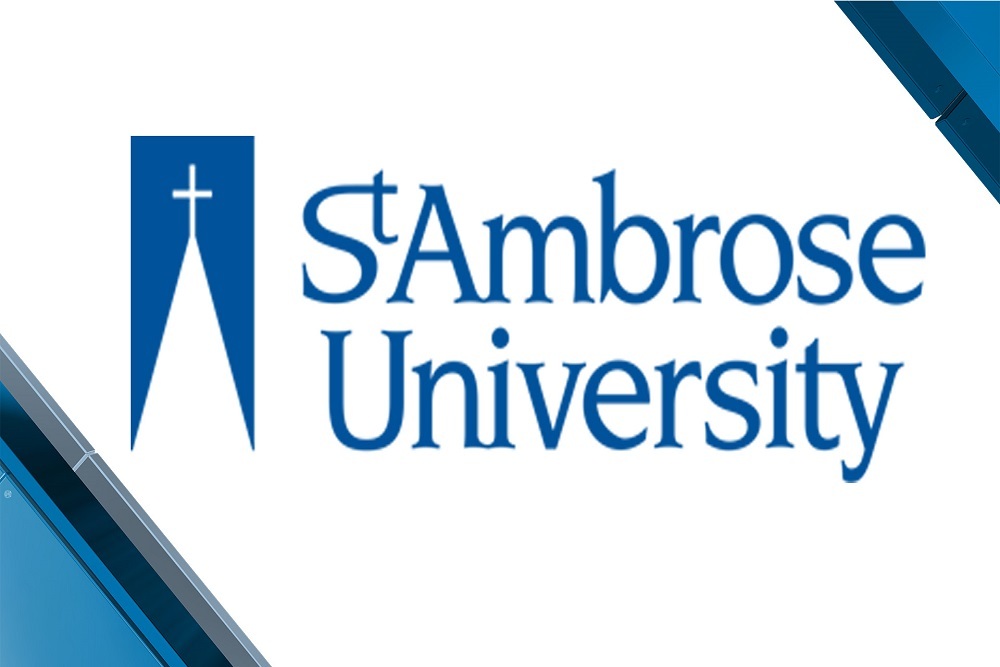SAVE THE DATE
What: "Catich's Christ: Community through Clothing" exhibition, an Art History & Museum Studies Capstone project by senior Grace Tony
Where: The Morrissey Gallery, Galvin Fine Arts Center
When: On display Monday, March 14 through Monday, April 18. Curator talk and reception from 3 to 5 p.m., Friday, April 1. The reception will also feature Maureen Long of the Art Legacy League, who will demonstrate calligraphy techniques as taught by Father Catich.
Who: Free and open to the public
Depictions of Jesus Christ in blue jeans certainly makes an impression and perhaps illustrate a literal vision of the Joan Osborne song, "What if God Was One of Us."
Grace Tony has spent several years exposed to portrayals of Jesus in jeans (and other modern clothes) through the work of Rev. Edward Catich (1906-1979) as she met and exceeded her internship hours in the St. Ambrose University Archives as a double Art History and History major, with minors in Museum Studies and Classical Studies.
Fr. Catich was the founder and a chair of the St. Ambrose University Art Department and is renowned for his calligraphy, watercolors, sketches, stone etchings, his studies of the Imperial Roman alphabet, and the sometimes controversial, religious artwork of putting modern clothing, such as suits or blue jeans, on holy figures. Many of which are housed in the archives of Edward M. Catich Memorial Gallery on the St. Ambrose campus.
Grace was especially compelled by the latter mentioned of Fr. Catich's work.
"I was at my work-study job in the Archives, rehousing Fr. Catich's work when I saw his religious artwork for the first time. It was unlike any religious art I'd ever seen. The piece that really caught my attention was a rendering he did of the Stations of the Cross, specifically the 10th Station, where Jesus is stripped of his clothes. It was genuinely uncomfortable for me to look at," said Tony.
She took that unsettling feeling and used it to drive her capstone project exhibit, "Catich's Christ: Community Through Clothing," recreating her first encounter with Fr. Catich's work for all to see.
"I tried to portray my encounter by keeping it (the exhibit) simple so that people can really look at his artwork and freely develop their own questions and thoughts about it," she said. "They can ask themselves how this depiction of religious figures in modern clothes changes their understanding and view of these holy people."
Tony turned to the teachings of her Museum Studies minor when grappling with the decision of what should be included in the exhibit.
"A museum visitor can be anyone, which is challenging to plan for. Many of my classes in the Museum Studies minor discussed the difficulties involved in trying to appeal to your audience. This helped me think about what my audience might need to appreciate Catich's artwork fully," said Tony.
Terri Switzer, chair and professor for the Art History program, believes the career-oriented internship hours of the Art History major and Museum Studies minor help drive students' success.
"Many graduate with more than 200 internship hours at area museums and institutions; this has paid off with 97% job placement and 100% grad school placement," said Switzer.
As Tony makes plans to attend graduate school (she's not decided which one she will attend yet,) she hopes her exhibit will spark a newfound interest in Fr. Catich and all that he has influenced.
"Fr. Catich was really humanized for me. It was surprising to learn that he was an orphan and was also a musician early on in his life. When I started this project, I vaguely knew of his later life when he worked at St. Ambrose, she said.
"I hope, whether people are Catholic or not, there is a renewed interest in Catich, and people will begin to ask questions about why the Church does things in a certain way. We always see Jesus depicted in flowing robes, but how many people really know why that is? Catich's work is still so relevant today."
Original source can be found here.


 Alerts Sign-up
Alerts Sign-up